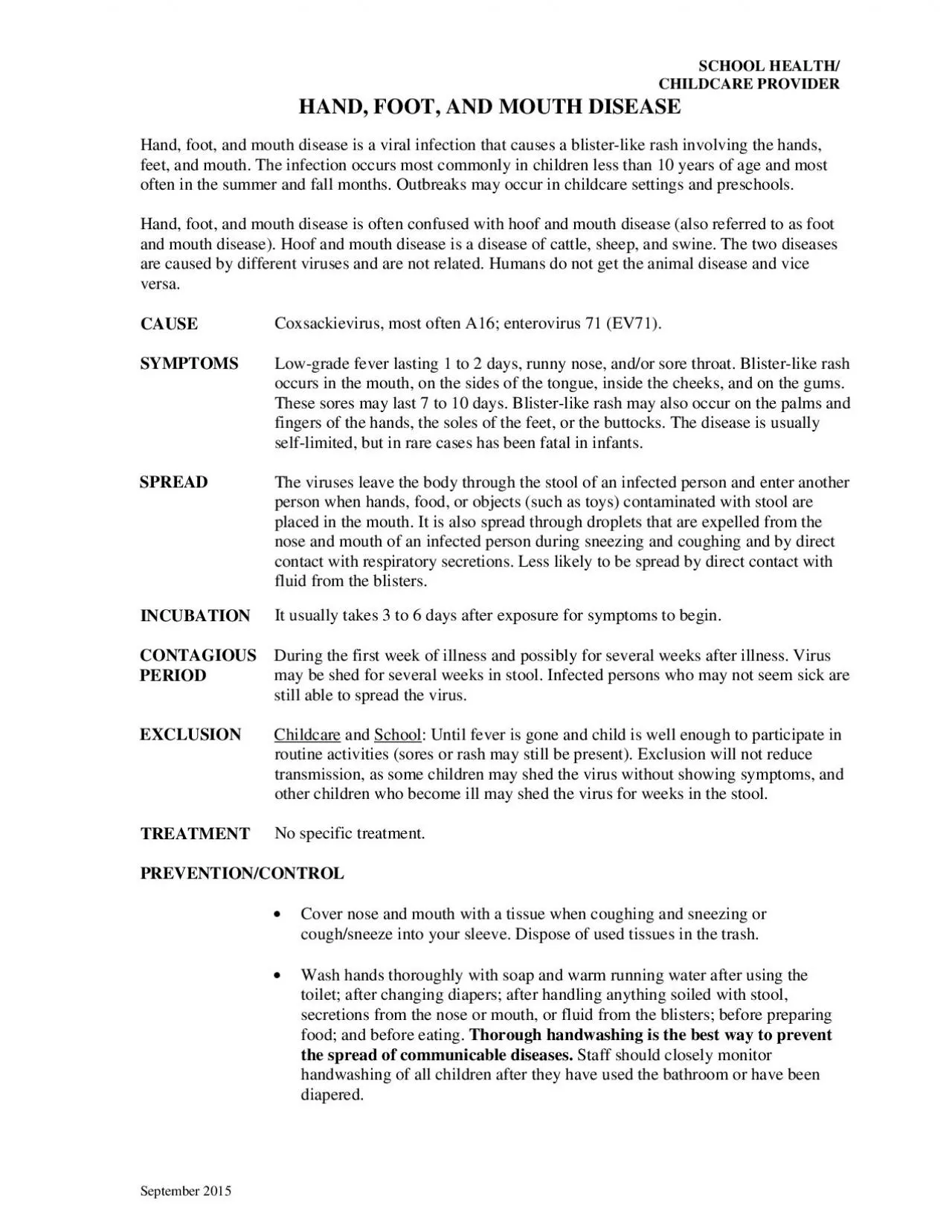

routine activities sores or rash may still be present Exclusion will not reduce transmission as some children may shed the virus without showing symptoms and other children who become ill may she ID: 949872
Download Pdf The PPT/PDF document "Hand foot and mouth disease is a viral i..." is the property of its rightful owner. Permission is granted to download and print the materials on this web site for personal, non-commercial use only, and to display it on your personal computer provided you do not modify the materials and that you retain all copyright notices contained in the materials. By downloading content from our website, you accept the terms of this agreement.
Hand, foot, and mouth disease is a viral infection that causes a blister-like rash involving the hands, feet, and mouth. The infection occurs most commonly in children less than 10 years of age and most often in the summer and fall months. Outbreaks may occur in childcare settings and preschools. Hand, foot, and mouth disease is often confused with hoof and mouth disease (also referred to as foot and mouth disease). Hoof and mouth disease is a disease of cattle, sheep, and swine. The two diseases are caused by different viruses and are not related. Humans do not get the animal disease and vice Coxsackievirus, most often A16; enterovirus 71 (EV71). Low-grade fever lasting 1 to 2 days, runny nooccurs in the mouth, on the sides of the tongue, inside the cheeks, and on the gums. These sores may last 7 to 10 days. Blister-like rash may also occur on the palms and eet, or the buttocks. The disease is usually self-limited, but in rare cases has been fatal in infants. The viruses leave the body through the stool of an infected person and enter another person when hands, food, or objects (such as toys) contaminated with stool are placed in the mouth. It is also spread through droplets that are expelled from the nose and mouth of an infected person during sneezing and coughing and by direct contact with respiratory secretions. Less likel
y to be spread by direct contact with fluid from the blisters. It usually takes 3 to 6 days after exposure for symptoms to begin. y for several weeks after illness. Virus may be shed for several weeks in stool. Infected persons who may not seem sick are EXCLUSION routine activities (sores or rash may still be present). Exclusion will not reduce transmission, as some children may shed the virus without showing symptoms, and other children who become ill may shedNo specific treatment. Cover nose and mouth with a tissue when coughing and sneezing or cough/sneeze into your sleeve. DispoWash hands thoroughly with soap and warm running water after using the toilet; after changing diapers; after handling anything soiled with stool, secretions from the nose or mouth, or fluid from the blisters; before preparing Staff should closely monitor handwashing of all children after they have used the bathroom or have been HAND, FOOT, AND MOUTH DISEASE Prepared by Hennepin County Human Services Clean and disinfect diapering area and potty chairs after each use. Clean and disinfect bathroom toilets, sinks, and toys at least daily and when soiled (see Clean and sanitize mouthed toys, objects, and surfaces at least daily and when For more information, call Hennepin County HSPHD-Epidemiology at (612) 543-5230 or call your local health department.